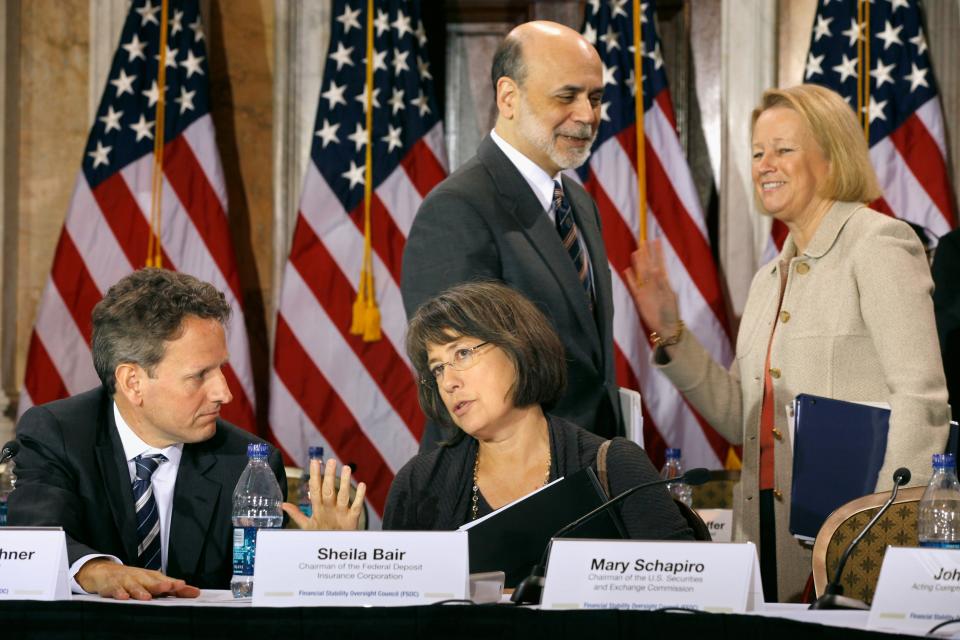The best books about Wall Street
Wall Street attracts a certain breed of individual. If you like brands maybe you work at P&G. If you like apparel maybe you’ll go to Nike or Under Armour. If you like software, there’s Silicon Valley.
And so who goes to Wall Street? People who want to make money and lots of it. Succeeding there requires a special type of person. Excess is not uncommon. All of that creates a rich environment for stories, as the following best books on Wall Street bear out.
This is our second in the series on great business books. In the first installment we listed great investing books. Here we list great books on Wall Street. Our final list will be great general books about business.
Best books about Wall Street
“Liar’s Poker” by Michael Lewis, 1989
Nearly thirty years later, it’s still a must read. This book—which kind of came out of nowhere—not only launched the career of Michael Lewis, it also presaged the fall of Salomon Brothers and engendered a rocky episode for Warren Buffett. No small things there. “Liar’s” is a semi-autobiographical account of a clueless Lewis leaving Princeton, going to work on Wall Street, finding it to be a rat’s nest and then decamping to become a writer. All manner of people have tried to tell this kind of story over the years, but Lewis succeeded because of his great eye, his storytelling (which some find excessive) and his turn of phrase. Of course Lewis has gone on to become one of the most prominent non-fiction business writers of our time. (See also “The Big Short,” and “Moneyball” among others.)

“Greed and Glory on Wall Street: The Fall of the House of Lehman” by Ken Auletta, 1986
“Transcends its Genre,” wrote one reviewer back then, and it’s true. Ken Auletta, another lion of a writer, tells of the rise and fall of Lehman 1.0. Not only is this book a great history/snapshot of Wall Street, but it also introduces us to the likes of Pete Peterson, Steve Schwarzman, Eric Gleacher, Roger Altman, Dick Fuld and many others. “Greed and Glory” is a classic struggle between old and new Wall Street—a tug of war that would be repeated dozens of times over the years. (See Goldman Sachs, Morgan Stanley, etc.) In this narrative Lehman basically died—and was later reborn—only to expire again in 2008. Will Lehman rise one more time? Don’t bet against it. (See also “Three Blind Mice: How the TV networks lost their way.”)
“Den of Thieves,” by Jim Stewart, 1992
Pulitzer Prize-winning author Jim Stewart—like Auletta and Lewis—almost deserves his own category he’s written so many epic business books, but this book stands out because it covers so much ground and does it so expertly. “Den” is the definitive work about the 1980s insider trading scandals (Ivan Boesky) and excesses and rise and fall of Drexel Burnham Lambert. I remember not being able to put it down. (See also “Disney War.”)
“Reminiscences of a Stock Operator” by Edwin Lefèvre, 1923
While “Reminiscences of a Stock Operator” was originally published almost a century ago, it’s amazing how relevant it is today. The book is a thinly veiled biography of Jesse Livermore, a renowned trader who began his career speculating in bucket shops at the start of the 20th century. As entertaining as it is educational, Lefèvre’s work of historical fiction showcases the nuances of the stock market and the psychology of trading and offers timeless advice on the markets. —Justine Underhill, Yahoo Finance reporter

“More Money Than God” Sebastian Mallaby, 2010
Mallaby’s “More Money Than God” provides a detailed history of the industry from the first “hedged fund” launched by Alfred Winslow Jones in 1949 to the titans of today. Mallaby dedicates a chapter to each of the major hedge fund legends, including Julian Robertson, Stanley Druckenmiller, George Soros, and others. It’s one of the best resources to gaining an insight into some of these larger-than-life personalities. —Julia La Roche, Yahoo Finance reporter
“Too Big To Fail” Andrew Ross Sorkin, 2009
“Too Big To Fail” is perhaps the most comprehensive account of the 2008 financial crisis. Sorkin provides a detailed, behind-the-scenes account leading up to the financial meltdown and its immediate aftermath. It’s a must-read for anyone starting out in business journalism.—Julia La Roche, Yahoo Finance reporter
(Serwer note: I asked Sorkin for something people didn’t know about his book and he emailed this: “The book almost wasn’t called “Too Big to Fail.” I had proposed that title when I sold it to penguin, but the editor didn’t love it … I liked it because I thought it worked on so many levels … still, for much of the time I was writing the book, I was also trying to come up a new title … the alternative title I proposed was “Failure of Imagination.” But clearly, “Too Big to Fail” was better! I suspect I’ll be able to use “Failure of Imagination” for another book!”)

“Bailout” by Neil Barofsky, 2012
“Bailout” is a page-turning account of how the financial crisis unfolded in Washington. Neil Barofsky, a former prosecutor in the US Attorney’s Office for the Southern District of New York, details his work as the special inspector general overseeing the $700 billion TARP bailout fund. In a shocking behind-the-scenes account, Barofsky discusses the mishandling of TARP funds, the roadblocks he encountered from Treasury officials and how Wall Street and Washington worked together to bailout the banks. —Justine Underhill, Yahoo Finance reporter
“When Genius Failed: The Rise and Fall of Long-Term Capital Management” by Roger Lowenstein, 2000
This is an amazing book for a number of reasons, not the least of which is that it tells the story of one John Meriwether, a hedge fund manager who was tied to that scandal at Salomon Brothers (see “Liar’s Poker” above), who also created a juggernaut hedge, Long Term Capital—replete with Nobel Prize-winning economists— which subsequently blew up and rocked the financial markets. Later, Meriwether founded JWM Partners, which was battered by the financial crisis of 2008, and closed the following year. Meriwether launched a new firm and fund, JM Advisors with less success. Genius has its limits, I guess. (See also “Buffett: The Making of an American Capitalist,” and “America’s Bank: The Epic Struggle to Create the Federal Reserve.”)
(Yahoo Finance’s Justine Underhill and Julia La Roche contributed to this piece)

